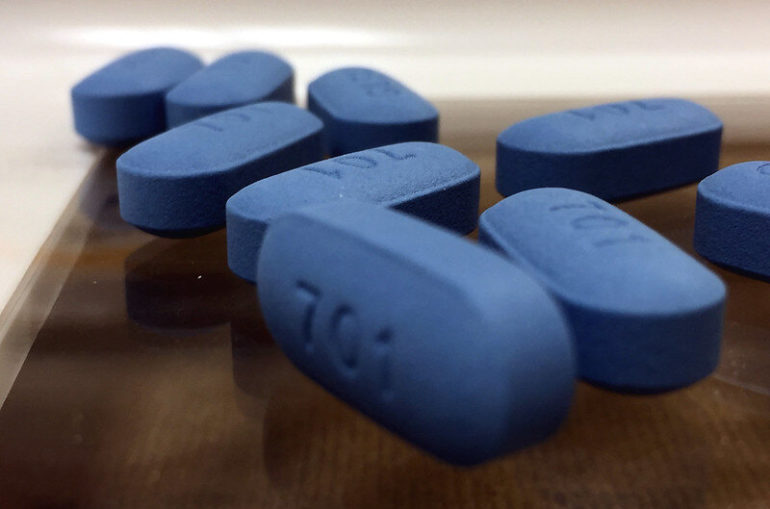A study led by researchers at the Johns Hopkins Bloomberg School of Public Health found that just under 20 percent of HIV-uninfected patients visiting Baltimore sexual health clinics were aware of pre-exposure prophylaxis medication (PrEP), a daily regimen that decreases a person’s risk of contracting HIV from sex by more than 90 percent.
The paper, published online March 3 in the Journal of Health Care for the Poor and Underserved, highlights the potential of integrating PrEP programs into public clinics that reach more patients with high HIV transmission risk but who often lack access to reliable health care.
For the study, the research team surveyed 1,464 HIV-uninfected patients who visited two public Baltimore City Health Department clinics devoted to sexually transmitted diseases in 2016. Of the participants, only 18 percent, or 258 participants, reported prior knowledge of PrEP. Four percent (10 participants) were already using PrEP. Importantly, 46 percent of the 1,397 patients unfamiliar with PrEP, or 638 participants, indicated they were highly receptive to learning more about PrEP, with interest among the high-risk men having sex with men (MSM) patients even higher at 63 percent.
“We want to ensure these communities have the awareness and resources they need,” says the study’s lead author, Cui Yang, Ph.D., a professor in the Bloomberg School’s Department of Health, Behavior and Society. “Otherwise, the same cycle of investing resources into programs that don’t resonate continues.”
About 1.2 million people in the U.S. currently live with HIV, according to CDC estimates for 2018, the last year for which CDC data are available. New HIV infections in the U.S. increased by approximately 36,000 in 2018 alone. Along with gay and bisexual men, HIV disproportionately impacts Black individuals, who represented over 40 percent of new HIV infections in 2018, despite representing 12 percent of the U.S. population.
Approved by the Food and Drug Administration in 2012, PrEP was seen as a game-changer for curtailing HIV especially among men having sex with men. Yet PrEP uptake has not reached its potential, largely due to both lack of awareness and lack of access. To address Baltimore city’s high rates of HIV, the Baltimore City Health Department launched a program in 2016 that offered a complimentary PrEP program to at-risk patients treated at the city’s free, public STI clinics. For their study, the researchers recruited patients visiting two of these clinics between April and October 2016.
The study found racial disparities around PrEP awareness, with white participants’ awareness twice as high as Black participants. PrEP awareness among white participants was 34 percent, or 29 participants, versus 16 percent, or 215 participants, among Black participants. Researchers noted that the disparity in PrEP awareness was alarming, especially considering the elevated risk of getting HIV in Black communities. Black men are over six times as likely to acquire HIV during their lives compared to white men. Lifetime HIV risk is seventeen times greater among Black women than white women.
Study participants identified health care providers as their primary source of PrEP information. Thirty-two percent of the 258 participants who indicated a prior awareness of PrEP, or 82 participants, reported they received information about PrEP from a health care provider. Twenty-eight percent of PrEP-aware respondents who identified health care providers as their primary source of PrEP knowledge reported Baltimore City Health Department clinics as their main source of PrEP information. Beyond health care providers, participants identified friends, television, and the internet as additional sources of information about PrEP.
Six percent or 84 study participants were identified as men having sex with men. The study found that MSM had significantly higher rates of PrEP awareness and use, with 76 percent of the 84 MSM participants reporting awareness of PrEP, while 10 percent of MSM participants were already taking PrEP. The researchers note that this higher rate of PrEP awareness and use among MSM was expected given national and local efforts to promote PrEP among MSM.
The study found particularly low levels of PrEP awareness among women having sex with men (16 percent or 82 participants) and women having sex with women (17 percent or 9 participants). The authors recommend expanding PrEP promotion to other populations at risk of HIV transmission.
“When HIV interventions such as PrEP become available, we see evidence that the most privileged communities have the best access,” says Cui Yang, Ph.D., a professor in the Bloomberg School’s Department of Health, Behavior and Society.
The researchers see public STI clinics, which already deliver HIV and STI services to communities at a higher risk of HIV transmission, as promising venues for introducing PrEP protocols in an accessible setting. The researchers hope the findings can support future, locally targeted PrEP programs in efforts to expand access to and uptake of PrEP.
“Awareness of and Interest in Pre-Exposure Prophylaxis among Patients Receiving Services at Public Sexually Transmitted Disease Clinics in an Urban Setting” was written by Cui Yang, Luke Johnsen, Matthew Thimm, Susan Tuddenham, Amanda Rosecrans, Khalil Ghanem, Melissa Davey-Rothwell, Patrick Olthoff, Adena Greenbaum, and Kathleen R. Page.
Awareness, use of PrEP on rise among men who have sex with men
More information:
Cui Yang et al. Awareness of and Interest in Pre-Exposure Prophylaxis among Patients Receiving Services at Public Sexually Transmitted Disease Clinics in an Urban Setting, Journal of Health Care for the Poor and Underserved (2021). DOI: 10.1353/hpu.2021.0039
Provided by
Johns Hopkins University Bloomberg School of Public Health
Citation:
Study finds low awareness of PrEP, the highly effective medication that protects individuals from HIV (2021, March 10)
retrieved 10 March 2021
from https://medicalxpress.com/news/2021-03-awareness-prep-highly-effective-medication.html
This document is subject to copyright. Apart from any fair dealing for the purpose of private study or research, no
part may be reproduced without the written permission. The content is provided for information purposes only.



